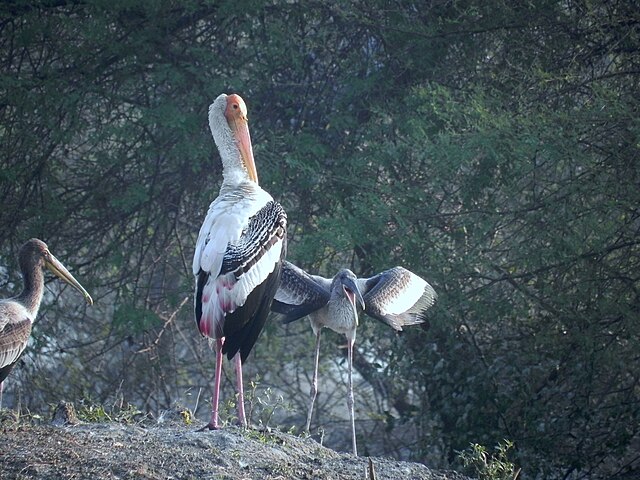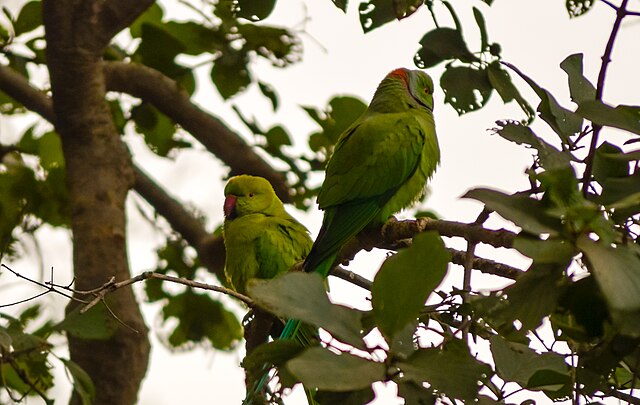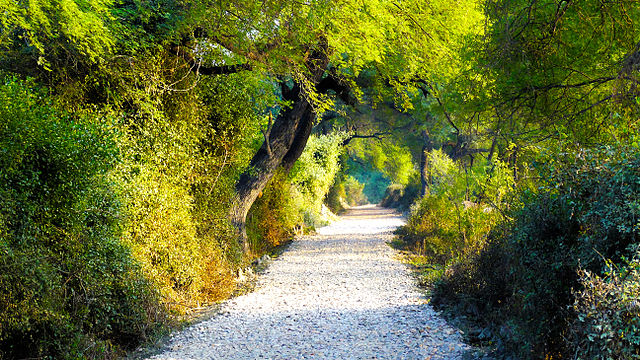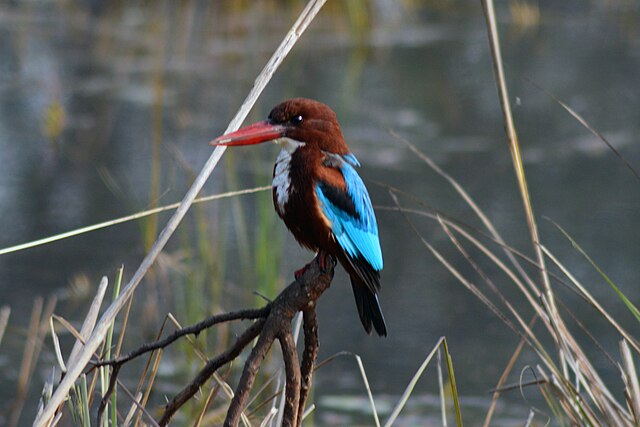Imagine stepping into a world where the air hums with the chatter of birds, where vibrant wings flash against a backdrop of lush wetlands and whispering grasslands. That’s Bharatpur Bird Sanctuary, or as it’s officially known, Keoladeo National Park, a gem tucked away in Rajasthan, India. This UNESCO World Heritage Site isn’t just a park—it’s a living, breathing haven for over 370 bird species and a testament to nature’s resilience. Whether you’re a seasoned ornithologist or someone who just loves a good nature escape, Bharatpur promises an adventure that’ll leave you spellbound. Let’s dive into what makes this sanctuary so special, from its royal roots to its vibrant ecosystem, and how you can make the most of your visit.
A Glimpse into Bharatpur’s Rich History
Bharatpur Bird Sanctuary wasn’t always the serene wildlife haven it is today. Picture this: back in the 18th century, this was a playground for royalty, a private duck-hunting reserve for the Maharajas of Bharatpur. In the 1850s, Maharaja Suraj Mal had a vision. He transformed a natural depression in the land by channeling water from the Gambhir and Banganga rivers, creating a sprawling wetland. This wasn’t just a whim—it was a carefully engineered ecosystem, complete with the Ajan Bund dam, designed to hold water and attract birds. By the late 19th century, it became a hotspot for extravagant hunting parties, with British viceroys and dignitaries joining the Maharajas to shoot thousands of ducks in a single day. Wild, right?
From Hunting Ground to Conservation Marvel
Fast forward to the 20th century, and the tides turned. Thanks to the efforts of legendary ornithologist Salim Ali, the hunting stopped, and the area was declared a protected sanctuary in 1956. By 1971, it was officially a bird sanctuary, and in 1982, it earned its stripes as a national park. The crowning glory came in 1985 when UNESCO recognized it as a World Heritage Site for its incredible biodiversity. Today, Keoladeo National Park stands as a shining example of how human intervention, when paired with conservation, can create something extraordinary. It’s like turning a battlefield into a peace garden—a place where nature thrives.
Why Bharatpur is a Birdwatcher’s Dream

If birds are your thing, Bharatpur is your Disneyland. With over 370 species recorded in just 29 square kilometers, this sanctuary is a hotspot for avian diversity. From resident birds like the vibrant Indian Roller to migratory visitors from Siberia and Central Asia, the park is a kaleidoscope of colors and sounds. Winter is when the magic really happens—thousands of birds, including cranes, pelicans, geese, and the rare Siberian crane (last spotted in 2002), flock here to escape colder climates. It’s like a global bird convention, and you’re invited!
Iconic Species to Spot
What’s on the guest list? You’ll see majestic Sarus cranes, with their red heads and graceful courtship dances, strutting like they own the place. Painted storks, with their bright pink and yellow plumage, wade through the wetlands, snapping up fish. Keep an eye out for the Pied Kingfisher, hovering like a tiny helicopter before diving for its prey. And if you’re lucky, you might spot a spotted owlet peeking from a tree or a grey heron standing statue-still by the water’s edge. It’s a birdwatcher’s jackpot, with every turn offering a new feathered friend.
More Than Just Birds
Don’t let the name fool you—Bharatpur isn’t just about birds. The sanctuary’s diverse ecosystem supports a cast of other characters. Sambar deer, nilgai (blue bulls), wild boars, and even jackals roam the grasslands. Reptiles like monitor lizards and pythons slither through the undergrowth, while frogs and toads add to the wetland’s chorus. The park’s flora, with over 300 species of flowering plants like babul, kadam, and water lilies, creates a lush backdrop that’s as vital to the ecosystem as the animals themselves. It’s like nature’s own orchestra, with every element playing its part.
Exploring the Sanctuary: How to Get the Best Experience
Ready to explore? Bharatpur offers several ways to soak in its beauty. You can walk the trails, feeling the crunch of leaves underfoot, or rent a cycle for a breezy ride through the park. For a more relaxed vibe, hop on an e-rickshaw—many of the drivers double as guides, trained to spot birds and share fascinating tidbits. If the water levels are high, a boat ride through the wetlands is a must, offering a front-row seat to the aquatic action. It’s like choosing your own adventure, with each option revealing a different side of the sanctuary.
Best Time to Visit
Timing is everything at Bharatpur. The sanctuary is open year-round, but the sweet spot is from October to February, when migratory birds arrive in droves, and the weather is pleasantly cool. August to November is great for spotting resident breeding birds, while the monsoon season (July to September) brings lush greenery but fewer birds due to flooding. Avoid May and June if you can—the wetlands often dry out, and the heat can be intense. Plan for early mornings or late afternoons for the best birdwatching, when the park is alive with activity and the light is perfect for photos.
Tips for Birdwatching and Photography
Want to make your visit unforgettable? Bring binoculars for close-up views of distant birds, and a good camera if you’re into photography—Bharatpur’s vibrant landscapes and wildlife are a shutterbug’s dream. Dress in neutral colors to blend into the surroundings, and keep noise to a minimum to avoid startling the wildlife. Patience is key; sometimes, you’ll wait quietly for that perfect shot of a heron in flight or a crane’s dance. It’s like fishing for moments—calm, focused, and oh-so-rewarding when you reel one in.
The Ecosystem: A Delicate Balance

Bharatpur’s magic lies in its man-made wetland, a delicate system of dykes and sluices that regulate water levels to create ideal habitats for birds and other wildlife. The park relies on water from external sources like the Ajan Bund reservoir, which can be a challenge during droughts. Conservation efforts, like removing invasive species and controlling cattle grazing, help maintain this balance. It’s a reminder that even a paradise like Bharatpur needs human care to thrive, like a garden that needs tending to bloom.
Flora: The Unsung Heroes
The sanctuary’s vegetation is the backbone of its ecosystem. Babul and kadam trees provide nesting sites, while water hyacinth and lilies in the wetlands offer food and shelter for aquatic birds. The grasslands, bursting with seasonal shrubs after the monsoon, feed herbivores like deer, which in turn support predators. It’s a complex web, where every plant plays a role in keeping the sanctuary alive, like the supporting cast in a blockbuster movie.
Bharatpur’s Cultural and Historical Context
Bharatpur isn’t just about nature—it’s steeped in history and culture. The sanctuary’s name comes from the Keoladeo Temple, a small shrine dedicated to Lord Shiva nestled within the park. The nearby city of Bharatpur, founded in 1733 by Maharaja Suraj Mal, is home to the formidable Lohagarh Fort, known as the “Iron Fort” for withstanding British attacks. The Bharatpur Palace, with its blend of Mughal and Rajput architecture, is another must-visit, showcasing the region’s royal past. It’s like stepping into a history book, with each monument telling a story of valor and grandeur.
Nearby Attractions to Explore
While the sanctuary is the star, Bharatpur has more to offer. The Government Museum houses artifacts from the region’s princely days, while the Ganga Mandir, with its stunning white marble deity, is a spiritual haven. For more wildlife, check out Band Baretha, an old royal reserve with over 200 bird species. And don’t miss Deeg Palace, a garden town with Mughal-style monuments. These spots add layers to your trip, like toppings on an already delicious cake.
Planning Your Visit: Practical Tips

Getting to Bharatpur is a breeze. The nearest airport is in Agra, 56 km away, while Bharatpur Junction railway station, just 5 km from the park, connects to Delhi, Jaipur, and Agra. By road, it’s a 2-hour drive from Agra or a 4-hour trip from Delhi. Entry fees are reasonable—around INR 75 for Indians and INR 500 for foreigners, with e-rickshaw rides costing about INR 100 per hour. Stay at places like The Bagh Resort or Hotel Sunbird for comfort and proximity to the park. Pack light, breathable clothing, and don’t forget water and sunscreen. It’s like gearing up for a day at the beach, but with birds instead of waves.
Conservation Challenges and Efforts
Bharatpur’s beauty comes with challenges. Water scarcity, especially during droughts, can disrupt the wetland ecosystem, affecting bird migration. Conservation programs, like those removing invasive species and engaging local communities, are vital. Visitors play a role too—stick to designated paths, avoid littering, and respect wildlife. It’s like being a guest in someone’s home; you want to leave it better than you found it.
Why Bharatpur Should Be on Your Travel List
Bharatpur Bird Sanctuary is more than a destination; it’s an experience that connects you with nature’s rhythm. Whether you’re marveling at a flock of pelicans or soaking in the serenity of the wetlands, the sanctuary offers a rare chance to slow down and appreciate the world’s beauty. It’s a place where history, culture, and nature intertwine, creating memories that linger long after you leave. So, grab your binoculars, lace up your shoes, and let Bharatpur’s avian symphony sweep you away.
Conclusion
Bharatpur Bird Sanctuary, or Keoladeo National Park, is a testament to the power of conservation and the wonders of nature. From its royal hunting days to its status as a UNESCO World Heritage Site, it’s a place where history and biodiversity dance together. Whether you’re chasing the thrill of spotting a rare bird or simply craving a peaceful escape, Bharatpur delivers. It’s a reminder that even in a fast-paced world, there are pockets of serenity waiting to be explored. So, why not plan a visit? Let Bharatpur’s vibrant ecosystem and timeless charm captivate your heart.
Frequently Asked Questions (FAQs)
1. What is the best time to visit Bharatpur Bird Sanctuary?
The best time is from October to February, when migratory birds flock to the sanctuary, and the weather is cool and pleasant. August to November is great for resident birds, but avoid May and June due to heat and dry wetlands.
2. How can I explore Bharatpur Bird Sanctuary?
You can explore on foot, by renting a cycle, or via an e-rickshaw with a trained guide. Boat rides are available during high water levels, offering a unique perspective of the wetlands.
3. What are the entry fees for Bharatpur Bird Sanctuary?
Entry fees are approximately INR 75 for Indian citizens and INR 500 for foreigners. E-rickshaw rides cost around INR 100 per hour, with additional charges for cameras or guided tours.
4. What wildlife can I expect to see besides birds?
The sanctuary is home to mammals like sambar deer, nilgai, wild boars, and jackals, as well as reptiles like monitor lizards and pythons, and amphibians like frogs and toads.
5. How do I get to Bharatpur Bird Sanctuary?
The sanctuary is easily accessible by air (Agra airport, 56 km away), train (Bharatpur Junction, 5 km away), or road (55 km from Agra, 184 km from Delhi). Taxis, buses, and rickshaws are readily available.

